#Canadian National War Memorial
Explore tagged Tumblr posts
Text



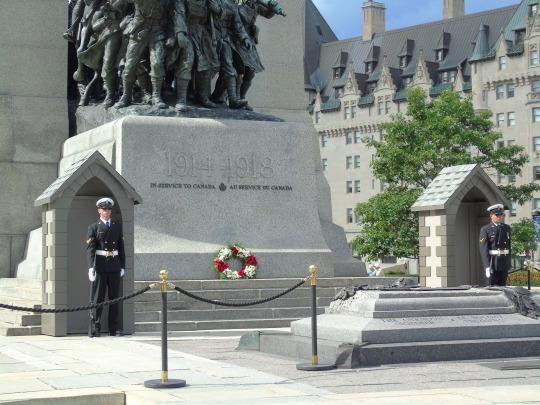
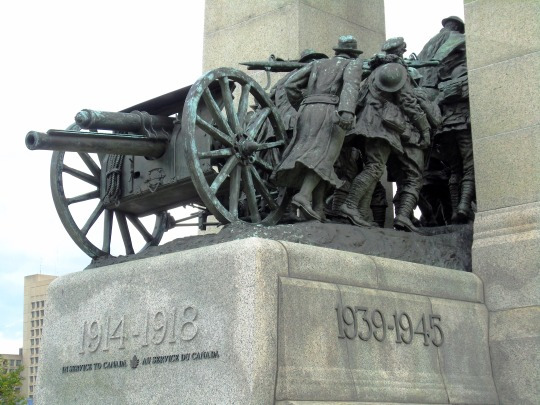
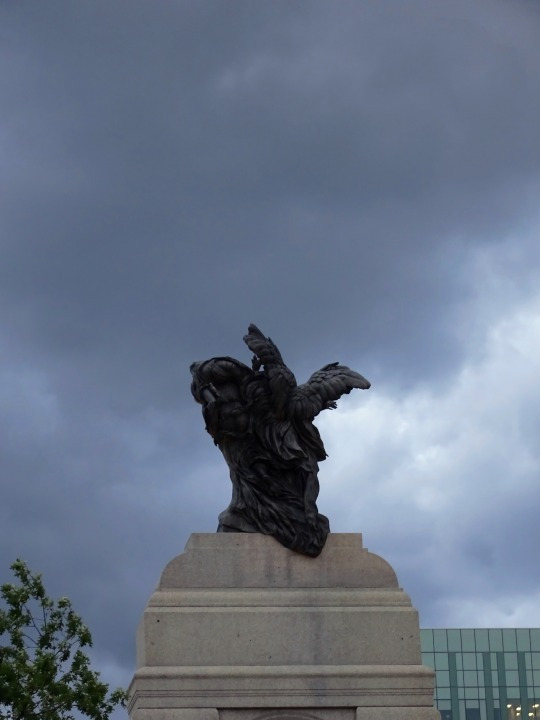
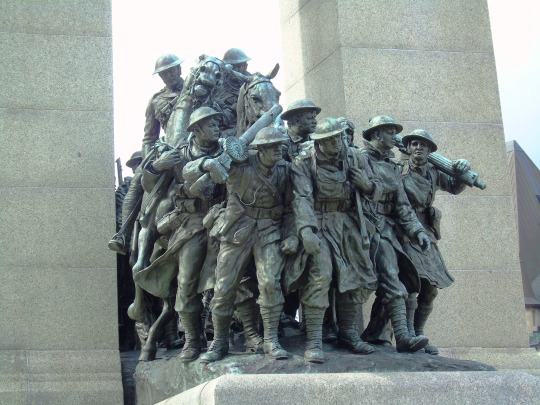
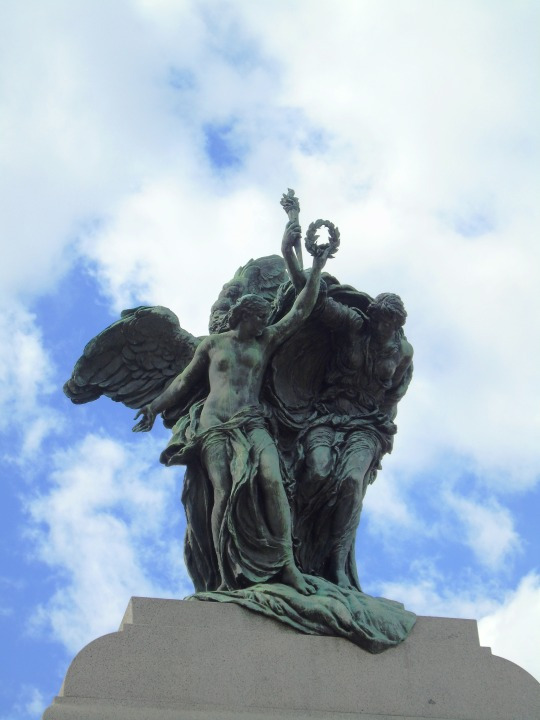
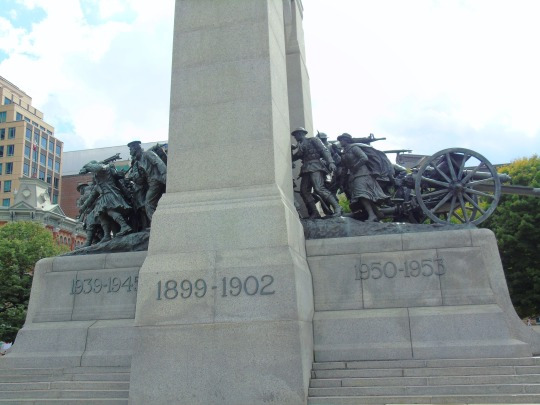
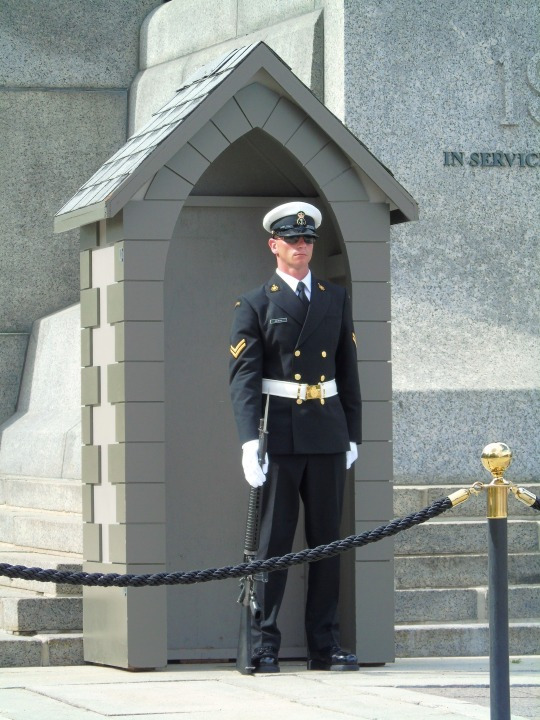
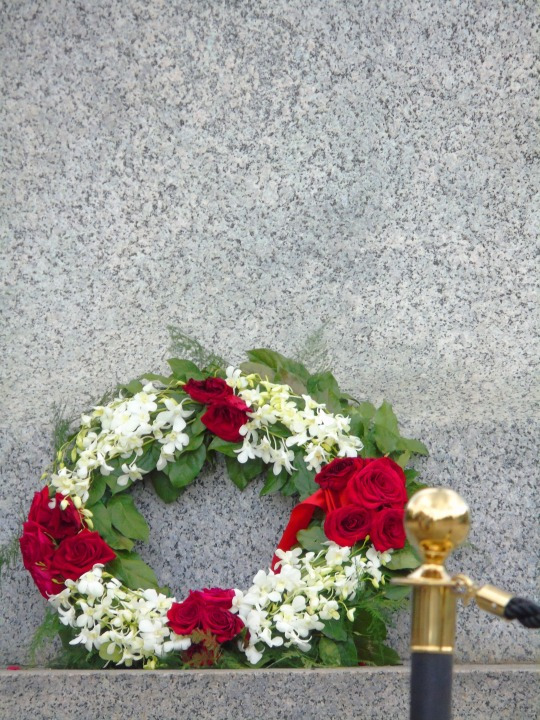
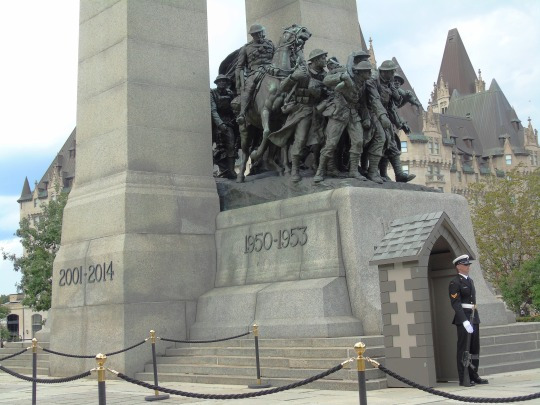
The Canadian National War Memorial was unveiled by King George VI and Queen Elizabeth in Ottawa on May 21, 1939.
#Peace and Liberty#the Response#National War Memorial by Vernon March#Canadian National War Memorial#unveiled#21 May 1939#anniversary#tracks#summer 2015#Canadian history#Ottawa#Ontario#travel#original photography#cityscape#sentinel#wreath#tourist attraction#landmark#architecture#vacation#Canada
2 notes
·
View notes
Text

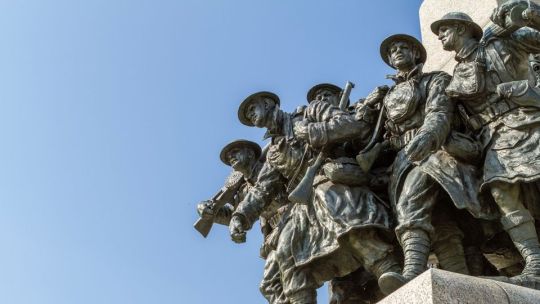
Built to honour the fallen of The Great War, Canada's War Memorial was unveiled by King George VI & Queen Elizabeth in Ottawa during the Royal Tour of 1939.. three months before the outbreak of WWII.
#National War Memorial#Ottawa#Remembrance Day#WWI#WWII#Korean War#RCAF#Royal Canadian Navy#The Fallen#British Empire#King George VI#Queen Elizabeth#May 1939
104 notes
·
View notes
Text









The Princess Royals Official Engagements in April 2025
01/04 Received Lieutenant General Richard Cripwell (Lieutenant-Governor and Commander-in-Chief of the Bailiwick of Guernsey). 🇬🇬
02/04 As Patron of Farms for City Children, visited Lower Treginnis Farm in St David’s, Haverfordwest. 🧑🌾
03/04 As President of Racing Welfare, attended the Charity Luncheon at Aintree Racecourse. 🐎
04/04 As Colonel-in-Chief of the Royal Canadian Medical Service, held a Meeting via video link with Major General Scott Malcolm (Surgeon General). 🇨🇦🩺
07/04 As President of the UK Fashion and Textile Association, visited Toray Textiles Europe Limited in Mansfield. 🧵
As Patron of the Eric Liddell Community, opened an Exhibition at 15 Morningside Road in Edinburgh.🥇
As Patron of the Haig Housing Trust, visited Veterans Housing in Edinburgh. 🏡
08/04 Visited Aden Country Park in Peterhead. 🌲
Visited MACBI Community Hub in Peterhead. 🤝
Visited Peterhead Prison Museum. ⛓️
As President of World Horse Welfare, visited a Rescue and Rehoming Centre and attended a Reception at Belwade Farm, Aboyne, Aberdeenshire. 🐴
09/04 Visited Three Kings Cullen Association at the Cullen Community and Residential Centre in Cullen, Buckie. 🤝🐴
Visited Cullen, Deskford and Portknockie Heritage Group at 11 the Square in Cullen. 🏴
Visited Gray Composting Services in Banff. ♻️
Visited Banffshire Partnership Limited at the Boyndie Visitor Centre. 🤝
10/04 Opened BAE Systems Naval Ships’ Applied Shipbuilding Academy in Scotstoun. ⚓️
As Patron of Sense Scotland, afterwards visited TouchBase Glasgow. 🧡💜
As Patron of the Friends of TS Queen Mary, attended a Reception at the Glasgow Science Centre. 🛥️
Visited the Traumatic Brain Injury Unit at the Briar Centre in Stonehouse. 🧠🤕
As Patron of Columba 1400, held a Twenty Fifth Anniversary Dinner at the Palace of Holyroodhouse. 🍽️
11/04 As Chancellor of the University of Edinburgh, officially opened Edinburgh Futures Institute. 🏴🎓
Opened Nautilus Welfare Fund’s Nautilus House in Wallasey. 🏡
14/04 As Guardian of Give Them A Sporting Chance, held a Management Team Meeting. ⚽️
As Guardian of the Chaffinch Trust, held a Management Team Meeting. 💼
15/04 As President of the Royal Yachting Association, attended the Youth National Championships at Plas Heli Cyf in Pwllheli.
As President of The Duke of Edinburgh’s Commonwealth Study Conferences, held a Dinner at Windsor Castle for the Commonwealth Study Conferences Canada’s As President’s Council and the Caribbean-Canada Leaders’ Dialogue. 🇨🇦🏝️
16/04 On behalf of The King, held an Investitures at Windsor Castle. 🎖️
22/04 As Former President of the Royal Association of British Dairy Farmers, presented the Princess Royal Award and the Royal Dairy Innovation Award. 🥛🐄
24/04 With Sir Tim Attended the Commemoration Service of Turkey at Çanakkale Martyrs’ Memorial, Gallipoli. 🇹🇷
With Sir Tim Attended the Commemoration Service of France at Morto Bay Cemetery, Gallipoli. 🇫🇷
With Sir Tim As President of Commonwealth War Graves Commission, afterwards visited the Seddel-Bahr Military Grave of Lieutenant Colonel Charles Doughty-Wylie at Seddulbahir, Gallipoli. 🪦
With Sir Tim Attended the Commemoration Service of the United Kingdom, Commonwealth and Ireland at Helles Memorial, Gallipoli. 🇬🇧🌍🇮🇪
With Sir Tim Visited Seddülbahir Castle, Gallipoli. 🏰
With Sir Tim Attended a Commanders’ Reception at the Kolin Hotel, Çanakkale, given by His Majesty’s Ambassador to the Republic of Turkey (Her Excellency Ms Jill Morris). 🥂
25/04 With Sir Tim Attended a “Spirit of Place” Ceremony and Dawn Memorial Service at Anzac Cove, Gallipoli. 🌅
With Sir Tim Attended a Reception at the Bengodi Hotel, Eceabat, Gallipoli Peninsula, given by the Australian Ambassador to the Republic of Turkey (His Excellency Mr Miles Armitage) and the New Zealand Ambassador to the Republic of Turkey (His Excellency Mr Gregory Lewis). 🇹🇷🥂
With Sir Tim Received the Governor-General of the Commonwealth of Australia (Her Excellency the Hon Samantha Mostyn) and Mr Simeon Beckett at the Bengodi Hotel. 🇦🇺
With Sir Tim Received the Rt Hon Christopher Luxon MP (Prime Minister of New Zealand) and Mr Mark Talbot (Senior Foreign Political Advisor) at the Bengodi Hotel. 🇳🇿
With Sir Tim Attended the Australian National Service at Lone Pine Cemetery, Gallipoli. 🇦🇺
With Sir Tim Visited Walker’s Ridge Cemetery, Gallipoli. 🇦🇺
With Sir Tim Attended the New Zealand Memorial Service at Chunuk Bair Cemetery, Gallipoli. 🇳🇿
28/04 As Patron of Sense, attended the Charity’s Seventieth Anniversary at Sense Touchbase Pears in Selly Oak, Birmingham. 💜🧡
As Chancellor of the University of London, attended a Graduation Ceremony at the Barbican Centre. 🎓
29/04 Visited Youth Court Solutions Service operating from Wellingborough Magistrates Court. ⚖️
As Patron of the Horse Trust, visited the Weigh to Win Programme at Slad Lane in Princes Risborough. 🐎
As Patron of the Durrell Wildlife Conservation Trust, held a Centenary Reception at Buckingham Palace. 🦋🐾🐍
As Patron of the Forces Employment Charity held a Dinner at St James’s Palace to mark the One Hundred and Fortieth Anniversary of the Charity. 🫡💼
30/04 As Patron of the English Rural Housing Association, Attended a Housing Conference at The Queen Elizabeth II Centre. 🏴🏡
As President of the City and Guilds of London Institute, attended the Tenth Anniversary of the Princess Royal Training Awards at Goldsmiths’ Hall. 🏆
As Royal Fellow of the Academy of Medical Sciences, attended a Reception at 41 Portland Place. 🩺🏥
With Sir Tim As Patron of the Whitley Fund for Nature, attended the Annual Awards Ceremony at the Royal Geographical Society. 🦋🧡
Total official engagements for Anne in April: 52
2025 total: 149
Total official engagements accompanied/represented by Tim in April: 14
2025 total: 18
#princess anne#princess royal#tim laurence#timothy laurence#aimees unofficial engagement count 2025#april 2025
33 notes
·
View notes
Photo

Queen Elizabeth lays a wreath at the Canadian National War Memorial. (1954)
21 notes
·
View notes
Photo

Chief Joseph (Eastman's Biography)
Chief Joseph (Heinmot Tooyalakekt, l. 1840-1904) was the leader of the Wallowa band of the Nez Perce Native American nation, who, in 1877, resisted forced relocation from his ancestral lands in the Wallowa Valley of northeastern Oregon and led his people on a 1,170-mile (1,900 km) flight toward Canada in hopes of asylum with Sitting Bull (l. c. 1837-1890).
The flight of the Nez Perce under Chief Joseph, a running battle in which he defeated US forces in every engagement, is known as the Nez Perce War, and newspaper accounts of the day, often hostile to Native American efforts to preserve their lands, were remarkably sympathetic to Chief Joseph's cause. When he and his people were a mere 40 miles (64 km) from the Canadian border, they were surprised by a US cavalry attack and forced to surrender.
Although the treaty between the Nez Pearce and the US government stipulated their relocation to a reservation in Idaho, briefly holding them in Montana Territory, they were instead quickly sent to Fort Leavenworth, Kansas, and held as prisoners of war before being shipped to Indian Territory (present-day Oklahoma), and finally to the Colville Indian Reservation in the state of Washington.
Chief Joseph spent the rest of his life appealing to US officials for the return of the lands of the Nez Perce in the Wallowa Valley, but his requests were denied. He is said to have died of a broken heart on the reservation in Washington on 21 September 1904.
In 1968 the US Post Office issued a stamp in his honor and memorial statues of Chief Joseph have been raised in many of the western states of the USA, but the lands of the Nez Perce have never been returned to them and there has never been any official acknowledgment of the outright theft of those lands by Euro-Americans.
Flight of the Nez Perce and Key Battle Sites of 1877
United States Department of Agriculture-Forest Service (Public Domain)
Text
The following account is taken from the 1939 edition of Indian Heroes and Great Chieftains (1916) by the Sioux physician and author Charles A. Eastman (also known as Ohiyesa, l. 1858-1939), republished in 2016. Eastman interviewed Chief Joseph in 1897 and prepared the following, which, as he said, was authenticated by General Nelson A. Miles, one of his former adversaries. The following has been edited for space, but the full account is below in the External Links section.
The Nez Perce tribe of Indians, like other tribes too large to be united under one chief, was composed of several bands, each distinct in sovereignty. It was a loose confederacy. Joseph and his people occupied the Imnaha or Grande Ronde valley in Oregon, which was considered perhaps the finest land in that part of the country.
When the last treaty was entered into by some of the bands of the Nez Perce, Joseph's band was at Lapwai, Idaho, and had nothing to do with the agreement. The elder chief in dying had counseled his son, then not more than twenty-two or twenty-three years of age, never to part with their home, assuring him that he had signed no papers. These peaceful non-treaty Indians did not even know what land had been ceded until the agent read them the government order to leave. Of course, they refused. You and I would have done the same.
When the agent failed to move them, he and the would-be settlers called upon the army to force them to be good, namely, without a murmur to leave their pleasant inheritance in the hands of a crowd of greedy grafters. General O. O. Howard, the Christian soldier, was sent to do the work.
He had a long council with Joseph and his leading men, telling them they must obey the order or be driven out by force. We may be sure that he presented this hard alternative reluctantly. Joseph was a mere youth without experience in war or public affairs. He had been well brought up in obedience to parental wisdom and with his brother Ollicut had attended Missionary Spaulding's school where they had listened to the story of Christ and his religion of brotherhood. He now replied in his simple way that neither he nor his father had ever made any treaty disposing of their country, that no other band of the Nez Perces was authorized to speak for them, and it would seem a mighty injustice and unkindness to dispossess a friendly band.
General Howard told them in effect that they had no rights, no voice in the matter: they had only to obey. Although some of the lesser chiefs counseled revolt then and there, Joseph maintained his self-control, seeking to calm his people, and still groping for a peaceful settlement of their difficulties. He finally asked for thirty days' time in which to find and dispose of their stock, and this was granted.
Joseph steadfastly held his immediate followers to their promise, but the land-grabbers were impatient, and did everything in their power to bring about an immediate crisis so as to hasten the eviction of the Indians. Depredations were committed, and finally the Indians, or some of them, retaliated, which was just what their enemies had been looking for. There might be a score of white men murdered among themselves on the frontier and no outsider would ever hear about it, but if one were injured by an Indian— "Down with the bloodthirsty savages!" was the cry.
Joseph told me himself that during all of those thirty days a tremendous pressure was brought upon him by his own people to resist the government order. "The worst of it was," said he, "that everything they said was true; besides"—he paused for a moment— "it seemed very soon for me to forget my father's dying words, 'Do not give up our home!'" Knowing as I do just what this would mean to an Indian, I felt for him deeply.
Among the opposition leaders were Too-hul-hul-sote, White Bird, and Looking Glass, all of them strong men and respected by the Indians; while on the other side were men built up by emissaries of the government for their own purposes and advertised as "great friendly chiefs." As a rule, such men are unworthy, and this is so well known to the Indians that it makes them distrustful of the government's sincerity at the start. Moreover, while Indians unqualifiedly say what they mean, the whites have a hundred ways of saying what they do not mean.
…the whites were unduly impatient to clear the coveted valley, and by their insolence they aggravated to the danger point an already strained situation. The murder of an Indian was the climax and this happened in the absence of the young chief. He returned to find the leaders determined to die fighting. The nature of the country was in their favor and at least they could give the army a chase, but how long they could hold out they did not know. Even Joseph's younger brother Ollicut was won over. There was nothing for him to do but fight; and then and there began the peaceful Joseph's career as a general of unsurpassed strategy in conducting one of the most masterly retreats in history.
Chief Joseph and Family c. 1880
F. M. Sargent (Public Domain)
This is not my judgment, but the unbiased opinion of men whose knowledge and experience fit them to render it. Bear in mind that these people were not scalp hunters like the Sioux, Cheyenne, and Utes, but peaceful hunters and fishermen. The first council of war was a strange business to Joseph. He had only this to say to his people:
"I have tried to save you from suffering and sorrow. Resistance means all of that. We are few. They are many. You can see all we have at a glance. They have food and ammunition in abundance. We must suffer great hardship and loss." After this speech, he quietly began his plans for the defense.
The main plan of campaign was to engineer a successful retreat into Montana and there form a junction with the hostile Sioux and Cheyenne under Sitting Bull…
It was decided that the main rear guard should meet General Howard's command in White Bird Canyon, and every detail was planned in advance, yet left flexible according to Indian custom, giving each leader freedom to act according to circumstances. Perhaps no better ambush was ever planned than the one Chief Joseph set for the shrewd and experienced General Howard. He expected to be hotly pursued, but he calculated that the pursuing force would consist of not more than two hundred and fifty soldiers. He prepared false trails to mislead them into thinking that he was about to cross or had crossed the Salmon River, which he had no thought of doing at that time. Some of the tents were pitched in plain sight, while the women and children were hidden on the inaccessible ridges, and the men concealed in the canyon ready to fire upon the soldiers with deadly effect with scarcely any danger to themselves. They could even roll rocks upon them.
In a very few minutes the troops had learned a lesson. The soldiers showed some fight, but a large body of frontiersmen who accompanied them were soon in disorder. The warriors chased them nearly ten miles, securing rifles and much ammunition, and killing and wounding many.
The Nez Perces next crossed the river, made a detour, and recrossed it at another point, then took their way eastward. All this was by way of delaying pursuit…
Chief Joseph US Postage Stamp
National Postal Museum (CC BY-NC-ND)
Meanwhile General Howard had sent a dispatch to Colonel Gibbons, with orders to head Joseph off, which he undertook to do at the Montana end of the Lolo Trail. The wily commander had no knowledge of this move, but he was not to be surprised. He was too brainy for his pursuers, whom he constantly outwitted, and only gave battle when he was ready. There at the Big Hole Pass he met Colonel Gibbons' fresh troops and pressed them close.
He sent a party under his brother Ollicut to harass Gibbons' rear and rout the pack mules, thus throwing him on the defensive and causing him to send for help, while Joseph continued his masterly retreat toward the Yellowstone Park, then a wilderness. However, this was but little advantage to him, since he must necessarily leave a broad trail, and the army was augmenting its columns day by day with celebrated scouts, both white and Indian. The two commands came together, and although General Howard says their horses were by this time worn out, and by inference the men as well, they persisted on the trail of a party encumbered by women and children, the old, sick, and wounded.
It was decided to send a detachment of cavalry under Bacon, to Tash Pass, the gateway of the National Park, which Joseph would have to pass, with orders to detain him there until the rest could come up with them. Here is what General Howard says of the affair. "Bacon got into position soon enough, but he did not have the heart to fight the Indians on account of their number." Meanwhile another incident had occurred. Right under the eyes of the chosen scouts and vigilant sentinels, Joseph's warriors fired upon the army camp at night and ran off their mules. He went straight on toward the park, where Lieutenant Bacon let him get by and pass through the narrow gateway without firing a shot…
However, this succession of defeats did not discourage General Howard, who kept on with as many of his men as were able to carry a gun, meanwhile sending dispatches to all the frontier posts with orders to intercept Joseph if possible. Sturgis tried to stop him as the Indians entered the Park, but they did not meet until he was about to come out, when there was another fight, with Joseph again victorious. General Howard came upon the battlefield soon afterward and saw that the Indians were off again, and from here he sent fresh messages to General Miles, asking for reinforcements.
Joseph had now turned northeastward toward the Upper Missouri. He told me that when he got into that part of the country he knew he was very near the Canadian line and could not be far from Sitting Bull, with whom he desired to form an alliance. He also believed that he had cleared all the forts. Therefore, he went more slowly and tried to give his people some rest. Some of their best men had been killed or wounded in battle, and the wounded were a great burden to him; nevertheless, they were carried and tended patiently all during this wonderful flight. Not one was ever left behind.
Statue of Young Chief Joseph
Visitor7 (CC BY-SA)
It is the general belief that Indians are cruel and revengeful, and surely these people had reason to hate the race who had driven them from their homes if any people ever had. Yet it is a fact that when Joseph met visitors and travelers in the park, some of whom were women, he allowed them to pass unharmed, and in at least one instance let them have horses.
He told me that he gave strict orders to his men not to kill any women or children. He wished to meet his adversaries according to their own standards of warfare, but he afterward learned that in spite of professions of humanity, white soldiers have not seldom been known to kill women and children indiscriminately…
The Bittersweet valley, which they had now entered, was full of game, and the Indians hunted for food, while resting their worn-out ponies. One morning they had a council to which Joseph rode over bareback, as they had camped in two divisions a little apart. His fifteen-year-old daughter went with him. They discussed sending runners to Sitting Bull to ascertain his exact whereabouts and whether it would be agreeable to him to join forces with the Nez Perces. In the midst of the council, a force of United States cavalry charged down the hill between the two camps. This once Joseph was surprised. He had seen no trace of the soldiers and had somewhat relaxed his vigilance.
He told his little daughter to stay where she was, and himself cut right through the cavalry and rode up to his own teepee, where his wife met him at the door with his rifle, crying: "Here is your gun, husband!" The warriors quickly gathered and pressed the soldiers so hard that they had to withdraw. Meanwhile one set of the people fled while Joseph's own band entrenched themselves in a very favorable position from which they could not easily be dislodged.
General Miles had received and acted on General Howard's message, and he now sent one of his officers with some Indian scouts into Joseph's camp to negotiate with the chief. Meantime Howard and Sturgis came up with the encampment, and Howard had with him two friendly Nez Perce scouts who were directed to talk to Joseph in his own language. He decided that there was nothing to do but surrender…
Even now, he was not actually conquered. He was well entrenched; his people were willing to die fighting; but the army of the United States offered peace and he agreed, as he said, out of pity for his suffering people. Some of his warriors still refused to surrender and slipped out of the camp at night and through the lines. Joseph had, as he told me, between three and four hundred fighting men in the beginning, which means over one thousand persons, and of these several hundred surrendered with him.
His own story of the conditions he made was prepared by himself with my help in 1897, when he came to Washington to present his grievances. I sat up with him nearly all of one night; and I may add here that we took the document to General Miles who was then stationed in Washington, before presenting it to the Department. The General said that every word of it was true.
In the first place, his people were to be kept at Fort Keogh, Montana, over the winter and then returned to their reservation. Instead, they were taken to Fort Leavenworth, Kansas, and placed between a lagoon and the Missouri River, where the sanitary conditions made havoc with them. Those who did not die were then taken to the Indian Territory, where the health situation was even worse.
Joseph appealed to the government again and again, and at last by the help of Bishops Whipple and Hare he was moved to the Colville reservation in Washington. Here the land was very poor, unlike their own fertile valley. General Miles said to the chief that he had recommended and urged that their agreement be kept, but the politicians and the people who occupied the Indians' land declared they were afraid if he returned, he would break out again and murder innocent white settlers! What irony!
The great Chief Joseph died broken-spirited and broken-hearted. He did not hate the whites, for there was nothing small about him, and when he laid down his weapons he would not fight on with his mind. But he was profoundly disappointed in the claims of a Christian civilization. I call him great because he was simple and honest.
Without education or special training, he demonstrated his ability to lead and to fight when justice demanded. He outgeneraled the best and most experienced commanders in the army of the United States, although their troops were well provisioned, well-armed, and above all unencumbered. He was great, finally, because he never boasted of his remarkable feat. I am proud of him because he was a true American.
Continue reading...
44 notes
·
View notes
Text

'Canadians can give themselves far more than any foreign power can ever take away,' King Charles III gives the first sovereigns speech to the Canadian Parliament in almost 70 years. Speech in full:
King Charles III delivered the Speech from the Throne on May 27 to open the first session of the 45th Parliament of Canada. Read the full text in English, below. (Some portions were delivered in French)
Honourable Senators, members of the House of Commons,
It is with a sense of deep pride and pleasure that my wife and I join you here today, as we witness Canadians coming together in a renewed sense of national pride, unity, and hope.
I would like to acknowledge that we are gathered on the unceded territory of the Algonquin Anishinaabeg people. This land acknowledgement is a recognition of shared history as a nation. While continuing to deepen my own understanding, it is my great hope that in each of your communities, and collectively as a country, a path is found toward truth and reconciliation, in both word and deed.
This is my 20th visit to Canada, spread over the course of more than half a century, and my first as Sovereign. As I have said before, “Every time I come to Canada a little more of Canada seeps into my bloodstream – and from there straight to my heart.”
I have always had the greatest admiration for Canada’s unique identity, which is recognized across the world for bravery and sacrifice in defence of national values, and for the diversity and kindness of Canadians.
To the First Nations, Inuit, and Métis Peoples – you have welcomed my family and myself to your traditional lands with great warmth and hospitality, for which I am humbly grateful.
This year, we mark the 80th anniversary of V-E Day and V-J Day. On Juno Beach, at Dieppe, on the Somme, at Beaumont-Hamel, at Ypres, and on Vimy Ridge. At those places, and many others, forever etched into our memories, Canadians fought and died alongside our closest allies.
Today, I see representatives from every part of Canada – from St. John’s, Newfoundland and Labrador, to Victoria, British Columbia, and Arviat, Nunavut. I see the guardians of the fundamental rights and freedoms guaranteed in the Canadian Charter and, as King, I thank you for your service to your fellow Canadians, across the length and breadth of this vast and great nation.
You speak for your communities, representing an incredible richness of cultures, languages, and perspectives. We owe it to this generation, and those who succeed us, to think and act for the greater good of all. While the world faces unprecedented challenges, generating uncertainties across the continents with regards to peace and stability, economics, and climate change, your communities have the skills and determination to bring a wealth of solutions.
By fostering collaboration and engaging in respectful, constructive debates, you will ensure this Government is capable of bold and fair action to support Canadians.
It has been nearly 70 years since the Sovereign first opened Parliament. In the time since, Canada has dramatically changed: repatriating its Constitution, achieving full independence, and witnessing immense growth. Canada has embraced its British, French, and Indigenous roots, and become a bold, ambitious, innovative country that is bilingual, truly multicultural, and committed to reconciliation.
The Crown has for so long been a symbol of unity for Canada. It also represents stability and continuity from the past to the present. As it should, it stands proudly as a symbol of Canada today, in all her richness and dynamism.
When my dear late mother, Queen Elizabeth II, opened a new Canadian Parliament in 1957, the Second World War remained a fresh, painful memory. The Cold War was intensifying. Freedom and democracy were under threat. Canada was emerging as a growing economic power and a force for peace in the world. In the decades since, history has been punctuated by epoch-making events: the Vietnam War, the fall of the Berlin Wall, and the start of the War on Terror. Today, Canada faces another critical moment.
Democracy, pluralism, the rule of law, self-determination, and freedom are values which Canadians hold dear, and ones which the Government is determined to protect.
The system of open global trade that, while not perfect, has helped to deliver prosperity for Canadians for decades, is changing. Canada’s relationships with partners are also changing.
We must be clear-eyed: the world is a more dangerous and uncertain place than at any point since the Second World War. Canada is facing challenges that are unprecedented in our lifetimes.
Many Canadians are feeling anxious and worried about the drastically changing world around them.
Fundamental change is always unsettling. Yet this moment is also an incredible opportunity. An opportunity for renewal. An opportunity to think big and to act bigger. An opportunity for Canada to embark on the largest transformation of its economy since the Second World War. A confident Canada, which has welcomed new Canadians, including from some of the most tragic global conflict zones, can seize this opportunity by recognising that all Canadians can give themselves far more than any foreign power on any continent can ever take away. And that by staying true to Canadian values, Canada can build new alliances and a new economy that serves all Canadians.
Building new relationships with the United States and the world
The Prime Minister and the President of the United States, for example, have begun defining a new economic and security relationship between Canada and the U.S., rooted in mutual respect and founded on common interests, to deliver transformational benefits for both sovereign nations.
In parallel, the Government is working to strengthen its relationships with reliable trading partners and allies around the world, recognizing that Canada has what the world needs and the values the world respects.
Canada is ready to build a coalition of like-minded countries that share its values, that believe in international co-operation and the free and open exchange of goods, services, and ideas.
In this new, fast-evolving world, Canada is ready to lead. This will be demonstrated in June, when Canada convenes the G7 Summit.
Building a more affordable Canada
The Government is guided by its conviction that the economy is only truly strong when it serves everyone.
Many Canadians are struggling to get ahead. The Government is responding, reducing middle-class taxes and saving two-income families up to $840 a year. It will cut the GST on homes at or under $1 million for first-time homebuyers, delivering savings of up to $50,000. And it will lower the GST on homes between $1 million and $1.5 million.
The Government will protect the programs that are already saving families thousands of dollars every year. These include child care and pharmacare. In addition to these, the Government has recently expanded the Canadian Dental Care Plan to cover about eight million Canadians, saving the average person more than $800 per year.
Building a stronger Canada
The Government’s overarching goal – its core mission – is to build the strongest economy in the G7. That starts with creating one Canadian economy out of thirteen. Internal barriers to trade and labour mobility cost Canada as much as $200 billion each year. The Government will introduce legislation to remove all remaining federal barriers to internal trade and labour mobility by Canada Day.
Numerous premiers have already taken vital steps to break down provincial and territorial barriers to trade. Together, we will build on that progress to deliver free trade across the nation by Canada Day. This is critical to unlocking Canada’s full economic potential, but it’s not enough.
To build Canada strong, the Government is working closely with provinces, territories, and Indigenous Peoples to identify and catalyse projects of national significance. Projects that will connect Canada, that will deepen Canada’s ties with the world, and that will create high-paying jobs for generations.
Given the pace of change and the scale of opportunities, speed is of the essence. Through the creation of a new Major Federal Project Office, the time needed to approve a project will be reduced from five years to two; all while upholding Canada’s world-leading environmental standards and its constitutional obligations to Indigenous Peoples.
The Government will also strike co-operation agreements with every interested province and territory within six months to realize its goal of “one project, one review.”
When Canadians come together, Canada builds things that last.
By removing these barriers that have held back our economy, we will unleash a new era of growth that will ensure we don’t just survive ongoing trade wars, but emerge from them stronger than ever. It will enable Canada to become the world’s leading energy superpower in both clean and conventional energy. To build an industrial strategy that will make Canada more globally competitive, while fighting climate change. To build hundreds of thousands of good careers in the skilled trades. And to build Canada into the world’s leading hub for science and innovation.
Critically, the Government will undertake a series of measures to help double the rate of home building while creating an entirely new housing industry – using Canadian technology, Canadian skilled workers, and Canadian lumber.
The Government will introduce measures to deliver affordable homes by creating Build Canada Homes. This mission-driven organization will act to accelerate the development of new affordable housing. It will invest in the growth of the prefabricated and modular housing industry.
And it will provide significant financing to affordable home builders. The Government will make the housing market work better, including by cutting municipal development charges in half for all multi-unit housing. The Government will drive supply up to bring housing costs down.
Building a safer and more secure Canada
To be truly strong, Canada must be secure. To that end, the Government will introduce legislation to enhance security at Canada’s borders. Law enforcement and intelligence agencies will have new tools to stop the flow of fentanyl and its precursors. The Canada Border Services Agency will be given new powers to examine goods destined for export, to prevent the transport of illegal and stolen products, including cars.
The Government will protect Canada’s sovereignty by rebuilding, rearming, and reinvesting in the Canadian Armed Forces. It will boost Canada’s defence industry by joining ReArm Europe, to invest in transatlantic security with Canada’s European partners. And it will invest to strengthen its presence in the North, which is an integral part of Canada, as this region faces new threats.
The Government will discharge its duty to protect Canadians and their sovereign rights, from wherever challenges may come at home or abroad. To keep communities safe, the Government will hire 1,000 more RCMP personnel. It will change firearms licensing and strengthen enforcement of yellow and red flag laws.
Weapons licences for those convicted of intimate partner violence and those subject to protection orders will be revoked. Through the deployment of scanners, drones and helicopters, additional personnel, and K-9 teams, the Government will stem the tide of illegal guns and drugs across the border.
It will take these steps while protecting the rights of lawabiding gun owners and Indigenous Peoples’ longstanding hunting traditions.
The Government will bring a renewed focus on car theft and home invasions by toughening the Criminal Code to make bail harder to get for repeat offenders charged with committing these crimes, along with human trafficking and drug smuggling.
During this time of great change, Canadians are uniting behind what makes Canada unique. The French language and the Quebec culture are at the heart of the Canadian identity. They define the country that Canadians and I love so much. Canada is a country that respects and celebrates its official languages and Indigenous languages. The Government is determined to protect the institutions that bring these cultures and this identity to the world, like CBC/Radio-Canada. It will protect the people who give us access to fresh, healthy, and quality food: agricultural producers. And it will protect supply management.
Nature is core to Canada’s identity. In 2022, Canada convened COP15 in Montréal, which concluded with 196 countries striking a historic agreement to protect 30 percent of their lands and 30 percent of waters by 2030. To this end, the Government will protect more of Canada’s nature than ever before through the creation of new national parks, national urban parks, marine protected areas, and other conservation initiatives.
The Government will always protect the rights and freedoms that the Charter guarantees for every Canadian.
The Government will be a reliable partner to Indigenous Peoples, upholding its fundamental commitment to advancing reconciliation. Central to this commitment is the creation of long-term wealth and prosperity with Indigenous Peoples. For that reason, the Government will double the Indigenous Loan Guarantee Program from $5 billion to $10 billion – enabling more Indigenous communities to become owners of major projects. As Canada moves forward with nation-building projects, the Government will always be firmly guided by the principle of free, prior, and informed consent.
Canada’s immigration system has long been a source of pride for Canadians and of dynamism for the economy. The Government is dedicated to rebuilding the trust of Canadians in immigration by restoring balance to the system.
The Government will cap the total number of temporary foreign workers and international students to less than five percent of Canada’s population by 2027. By doing this, the Government will attract the best talent in the world to build our economy, while sending a clear message to Canadians working abroad that there is no better time to come home.
Building Canada Strong by spending less and investing more
In all of its actions, the Government will be guided by a new fiscal discipline: spend less so Canadians can invest more.
Day-to-day government spending – the government’s operating budget – has been growing by nine percent every year. The Government will introduce measures to bring it below two percent.
Transfers to provinces, territories, or individuals will be maintained. The Government will balance its operating budget over the next three years by cutting waste, capping the public service, ending duplication, and deploying technology to improve public sector productivity.
In parallel, the Government will take a series of measures to catalyse new investment to create better jobs and higher incomes for Canadians. The scale of the Government’s initiative will match the challenges of our times and the ambitions of Canadians.
Honourable Senators, Members of the House of Commons,
When my dear late mother addressed your predecessors seven decades ago, she said that in that age, and against the backdrop of international affairs, no nation could live unto itself. It is a source of great pride that, in the following decades, Canada has continued to set an example to the world in her conduct and values, as a force for good.
I wish to express to you and to the people of Canada my heartfelt gratitude, and that of my wife, for the warmth of the welcome which we have received.
As the anthem reminds us: The True North is indeed strong and free!
Members of the House of Commons, you will be asked Conclusion to appropriate the funds to carry out the services and expenditures authorized by Parliament.
May you honour the profound trust bestowed upon you by Canadians, and may God bless and guide you in all your duties.
17 notes
·
View notes
Text






The Canadian Army
Remembrance Day in Canada, observed on November 11, honors the men and women who served in the Canadian Armed Forces, particularly those who sacrificed their lives in war, conflict, and peacekeeping missions. This solemn day marks the armistice that ended World War I on November 11, 1918, and has grown to commemorate veterans of all wars, including World War II, the Korean War, and peacekeeping missions around the world.
At 11:00 a.m., Canadians observe a moment of silence to remember and reflect on the courage and sacrifices of military personnel. In many communities, ceremonies are held at cenotaphs and war memorials, where people lay wreaths and recite the poem "In Flanders Fields" by Lieutenant-Colonel John McCrae, a Canadian soldier and poet. The red poppy, inspired by this poem, is a symbol of remembrance in Canada, worn by many people leading up to November 11.
The Royal Canadian Legion, a national organization of veterans, plays a significant role in organizing Remembrance Day events and the annual poppy campaign, with funds going to support veterans and their families.
#military art#history#military#soldier#cavalry#canadian army#canadian uniform#armistice day#remembrance day#world war 1#world war 2#the great war#canadian history#british history
23 notes
·
View notes
Text
by Elchanan Poupko
For centuries, rabbis around the world get up on Shabbat Zachor and speak about memory, never about violence. Not once in the past 2000 years of Jewish history – and that is a vast record to draw on – was the Biblical account of Amalek used to evoke revenge. It was always used to evoke memory. The imperative to remember the unprovoked atrocities committed against our own innocent communities.
The name of Amalek was invoked to remind us of the ubiquitous nature of antisemitism, the only hate in the world directed against people who are unknown to those seething with hate for us. People like the Houthis in Yemen who never saw a Jew in their life, yet are determined to destroy the Jewish state; Nazis in Germany who traveled hundreds of miles away from home to kill Jews in Belarus, Lithuania, Hungary, and Morocco even though they had never seen or known much about those Jews, that is the kind of evil we speak about when invoking the memory of Amalek.
In our generation, when speaking about that kind of senseless hate, we speak about the Hamas terrorists who woke up on the morning of October 7th and were willing to gable away their lives and futures to murder and burn alive people like Canadian peace activist Vivian Silver, someone who spent her life driving Palestinians from Gaza to medical appointments in Israel’s best hospitals. We invoke the memory of Amalek when we encounter something so evil it defies any logical explanation.
It is appalling to see how many people rushed to the Bible to judge Israel’s use of the memory of Amalek before looking at its use for the past 2000 years, most notably during the Holocaust.
While Germany starved to death and killed hundreds of thousands of Jews in the Warsaw Ghetto, Jews secretly published a newsletter called Kol Hamidbar in which the emaciated Jews wrote: “Many nations waged war against the Jews and did bad unto them, but Amalek, that is something absolutely different. Amalek put the destruction of Jews as a goal, a program, a method; premeditated, in cold blood, sadistically, according to a plan, organized, and with laws… Amalek and their grandson Haman are not satisfied with the killing of individual Jews…they would like to destroy the entire nation and eliminate Judaism.”
These words ring powerfully to any Jew who has seen what Hamas terrorists did on October 7th. The senseless hate that defies any logic or pattern of human conflict is simply unexplainable. The kidnapping of grandmothers from their homes and burning of babies and little girls alive with no reason whatsoever has no other language.
Jews invoke this language of Amalek when we encounter the world’s oldest hate, acted on with cruelty no human can explain. Jews have done so countless times while remembering the Holocaust and also did so while seeing the evils of Hamas on October 7th.
Like Jews after the Holocaust, the memory of Amalek’s unforgivable horrors reminds us of the need to take action. How does that action look? Years ago, speaking to congregants in synagogue, here is what I said as I spoke of the story of Amalek, and I was not the only one:
“The greatest heed to the call ‘Yidden, Nekama – Jews, Revenge’ inscribed in blood in Slabodka, Lithuania, is not going back to that town and place or to those perpetrators; it is that there are today thousands of students in Israel learning in Yeshivas named Slabodka. It is that we are undeterred in leading proud Jewish lives, laser-focused on the future while refusing to forget the past.”
Jewish revenge never looks like the acts of our enemies. We never follow in the inhumane footsteps of those who committed the unthinkable against us. This is true also concerning the horrors of October 7th.
57 notes
·
View notes
Text
80th Anniversary of End of WWII - Various Commemorations by European Royals
Sunday May 4th Denmark & UK
Attend Church Service to mark 80th Anniversary of liberation of Denmark at Vor Frue Kirke in Copheagen, Denmark (4:30 PM GMT+2)
Denmark Royals
King Frederik & Queen Mary
Queen Margrethe
Princess Benedikt
UK Royals
The Duke & Duchess of Gloucester
(UK Palace did not explicitly state which events in Denmark the couple would attend. But I think it is likely they will be at the same events as Denmarks royals)
Attend memorial service to mark 80th Anniversary of liberation of Denmark, at The Memorial Grove in Ryvangen, Denmark (7:30 PM GMT+2)
Denmark Royals
King Frederik & Queen Mary
Queen Margrethe
Princess Benedikt
UK Royals
The Duke & Duchess of Gloucester
(UK Palace did not explicitly state which events in Denmark the couple would attend. But I think it is likely they will be at the same events as Denmarks royals)
Netherlands
Attend National Commemoration Service at De Nieuwe Kerk in Amsterdam
King Willem-Alexander & Queen Maxima
Attend the commemoration at the Canadian cemetery in Holten, Netherlands
Princess Margriet and Prof. Van Vollenhoven
Attends the National Military Remembrance Day at Military Cemetery Grebbeberg, Rhenen
Prof. Van Vollenhoven
Prince Pieter-Christiaan
Monday May 5th
Belgium
Visits the Czech Republic to mark 80th anniversary of the liberation of Pilsen
King Philipe
Netherlands
Attend the National Liberation Day Concert
King Willem-Alexander & Queen Maxima
Attend National Commemoration of the Capitulations of 1945, the May 5 lecture and the Freedom Parade.
Prof. Van Vollenhoven
Norway
Lunch Meeting on the Day of Liberation
Crown Prince Haakon
UK
Military Procession at Queen Victoria Memorial & Fly Past at Buckingham Palace
King Charles & Queen Camilla
Prince William & Princess Kate
Prince Edward & Duchess Sophie
Princess Anne & Sir Tim
The Duke of Kent
Tea Party at Buckingham Palace for veterans and members of the Second World War generation
King Charles & Queen Camilla
Prince William & Princess Kate
Prince Edward & Duchess Sophie
Princess Anne & Sir Tim
The Duke of Kent
Tuesday May 6th
Belgium
Visits the Czech Republic to mark 80th anniversary of the liberation of Pilsen
King Philipe of Belgium
UK
View display of ceramic poppies at the Tower of London
Queen Camilla
Thursday May 8th
Norway
Attend Liberation Day and National Veterans Day event at Akershus Fortress
King Harald
Crown Prince Haakon
Attend Liberation Day event at Trandumskogen
King Harald
Crown Prince Haakon
UK
Attend a Service of Thanksgiving at Westminster Abbey on the 80th anniversary of VE-Day
King Charles & Queen Camilla
Prince William & Princess Kate
Prince Edward & Duchess Sophie
Princess Anne & Sir Tim
The Duke & Duchess of Gloucester
The Duke of Kent
Attend a concert on Horse Guards Parade
King Charles & Queen Camilla
Friday May 9th
Netherlands - Canceled
Visit Canada to mark eighty years of freedom since the Second World War.
Attending:
Princess Margriet and Prof. Van Vollenhoven
Canceled as Princess Margriet is still recovering from her broken arm
UK
Visit the Channel Islands to mark the 80th anniversary of the liberation of Guernsey and Sark
Princess Anne & Sir Tim
I'll be watching "A Royal Night Out" Free on Prime Video & on YouTube
youtube
Credit to Gert's Royals: 80th Anniversary of End of WWII - Various Commemorations by European Royals (Week of May 4th, 2025)
http://gertsroyals.blogspot.com/2025/05/80th-anniversary-of-end-of-wwii-various.html?m=1
5 notes
·
View notes
Text









The Second Boer War erupted in South Africa between the British-ruled Cape Colony, and the Boer-ruled Transvaal and Orange Free State on October 11, 1899.
#travel#original photography#South African (Boer War) Memorial by Walter Allwards#Second Boer War#11 October 1899#125th anniversary#Canadian history#Toronto#Ontario#Ottawa#Canada#summer 2018#cityscape#architecture#fountain#public art#sculpture#2015#The Response#Canadian National War Memorial#National War Memorial by Vernon March#vacation#tourist attraction#landmark
2 notes
·
View notes
Text
Living on the other side of the longest undefended border in the world from their superpower neighbor has created a paradox in Canadians’ national identity. Canadians are not Americans. They are different in ways that are central to their sense of who they are. At the same time, the two countries’ respective cultures, sports, music, movies, television, literature, economies, and militaries are so integrated as to be inseparable. For longer than living memory, Canadians have seen the U.S. as more than the closest of allies. America has been Canada’s closest partner and friend.
Donald Trump has destroyed that in less than two months.
The president has declared an economic war on Canada that is savage enough to cripple its economy. His tariff threats have created economic uncertainty and shaken the Canadian economy. On March 5, Trump made good on his threats, imposing 25 percent tariffs on all imports from Canada, before carving out major exceptions. Because Canada trusted its partnership with the U.S. and had made it by far its largest trading partner, accounting for 77 percent of all exports, even the reduced levies are significant enough to damage the Canadian economy.
Trump’s stated reason for the aggressive policy is to compel Canada to tighten border security to stop the flow of fentanyl into the United States. Canada’s foreign affairs minister, Melanie Joly, called that justification a “bogus argument.” And the data supports her assertion. Canada accounts for only 0.2 percent of the fentanyl that enters the United States. Nonetheless, Canada was determined to work with the Trump administration, implementing a “$1.3 billion border plan” and appointing a fentanyl czar. Trump demanded results, and the Canadian response gave him the results he sought. On March 3, Canadian Prime Minister Justin Trudeau reported that “fentanyl seizures from Canada have dropped 97 percent between December 2024 and January 2025.” For whatever reason, that wasn’t enough for Trump.
4 notes
·
View notes
Text
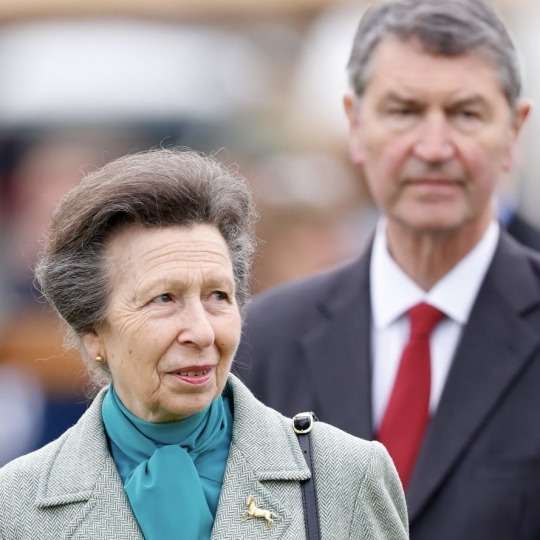
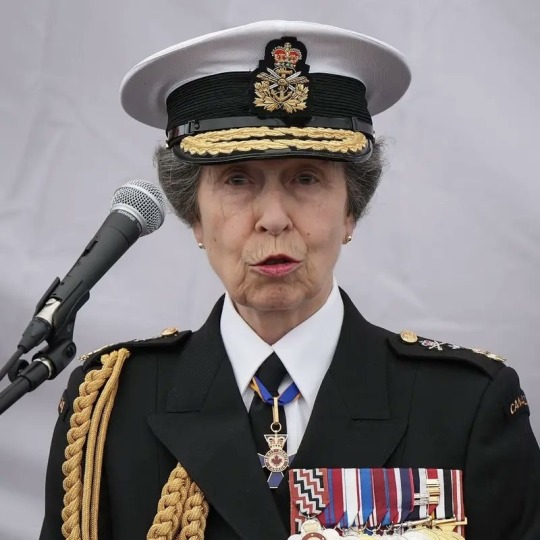
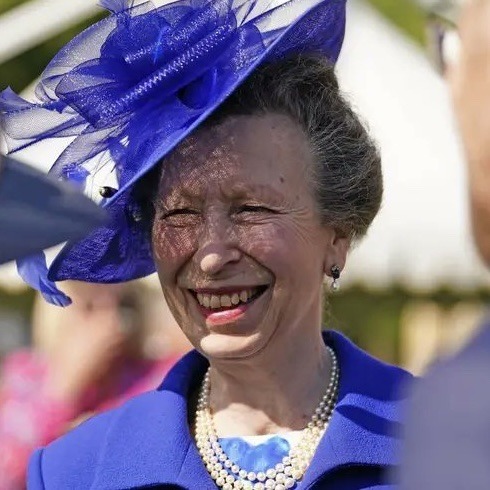
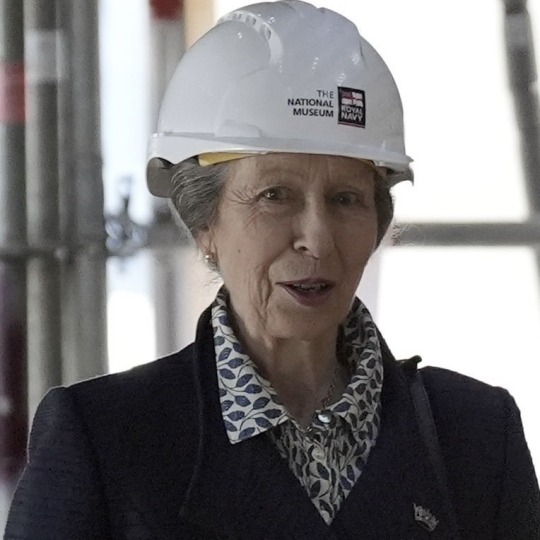

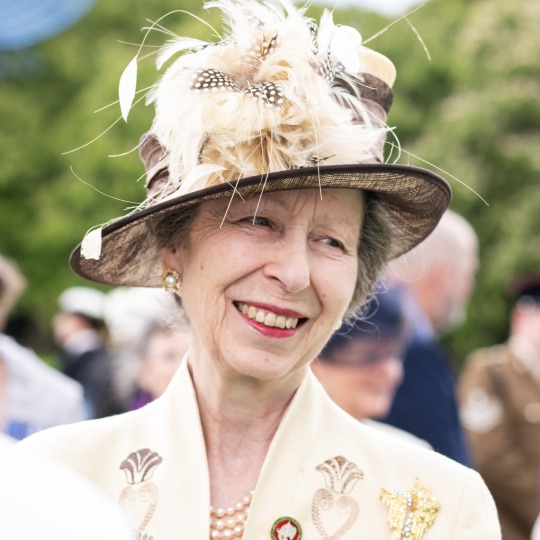
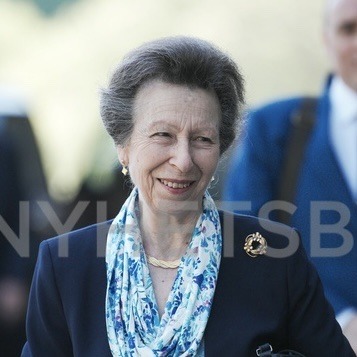
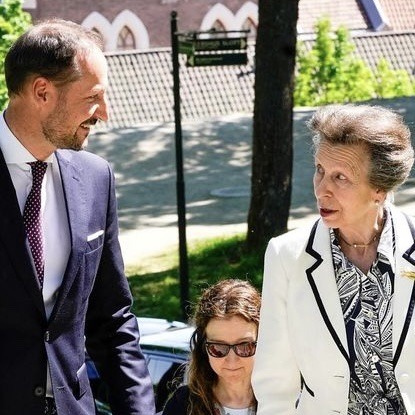
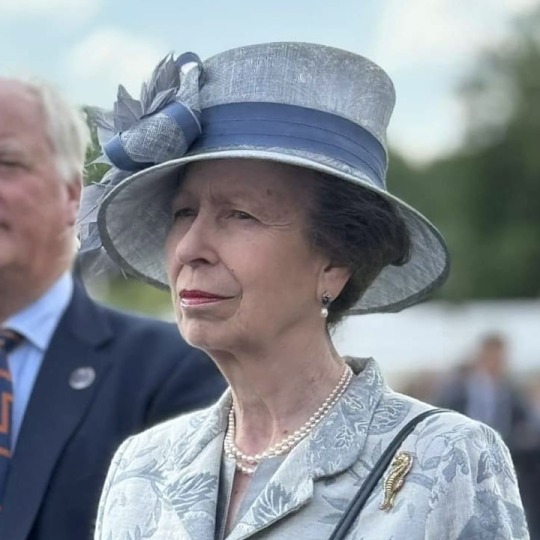
The Princess Royal’s Official Engagements in May 2024
01/05 On behalf of The King, held an Investiture at Buckingham Palace. 🎖️
As President of the City and Guilds of London Institute, attended The Princess Royal Training Awards Alumni Skills Summit at Guildhall. 🏆
With Sir Tim As Patron of the Whitley Fund for Nature, attended the Annual Whitley Awards Ceremony at the Royal Geographical Society. 🦋
02/05 With Sir Tim Named a Great Western Railway Intercity Express Train ‘HRH The Princess Royal’ at Paddington Railway Station. 🚉
Unofficial With Sir Tim Attended day two of the Royal Windsor Horse Show. 🐎
03/05 With Sir Tim Departed the UK from Stansted Airport for Canada and arrived at Vancouver International Airport
HRH, as Commodore-in-Chief of the Royal Canadian Navy (Pacific Fleet), with Sir Tim, carried out engagements in Vancouver;
Attended the Commissioning Ceremony for HMCS MAX BERNAYS at North Vancouver Burrard Drydock, before attending a Reception onboard. ⛴️ 🇨🇦
Attended a Dinner onboard HMCS MAX BERNAYS at sea. 🍽️
04/05 HRH, as Commodore-in-Chief of the Royal Canadian Navy (Pacific Fleet), with Sir Tim, carried out engagements in Victoria;
Toured HMCS Max Bernays at sea. 🌊
Visited Esquimalt Military Family Resource Centre at the Canadian Forces Base Esquimalt. 👪🪖
As President of the Commonwealth War Graves Commission, visited God’s Acre Cemetery and laid a wreath at the Memorial. 🌹
Visited the Maritime Museum of British Columbia Archive. 📜���️
Her Royal Highness afterwards visited Fed Urban Agriculture Society Urban Farm, 395 Harbour Road. 🌾
Attended a Reception given by the Lieutenant Governor of British Columbia (the Hon Janet Austin) at Government House. 🥂
Attended a Dinner given by the Lieutenant Governor of British Columbia at Government House. 🍽️
05/05 HRH, as Commodore-in-Chief of the Royal Canadian Navy (Pacific Fleet), with Sir Tim, carried out engagements in Victoria;
Visited Government House Gardens. 🪴⛲️
Attended the Battle of the Atlantic Memorial Parade at the Parliament Building and laid a wreath at the Cenotaph before taking the salute at the march past of Canadian Armed Forces Veterans, Serving Personnel and Cadets. 🫡
Attended a Royal Victoria Yacht Club Youth Dinghy Regatta. 🛥️
As Patron of the Canadian Therapeutic Riding Association, visited Victoria Therapeutic Riding Association. 🐎
Departed Vancouver International Airport for the United Kingdom. 🇨🇦✈️🇬🇧
06/05 Arrived at Heathrow Airport from Canada 🇨🇦✈️🇬🇧
08/05 Hosted a garden party at Buckingham Palace alongside The King and Queen, The Duke and Duchess of Edinburgh and The Duke and Duchess of Gloucester. 🍃☀️🪴
As Patron of the Woolf Institute, attended a Reception, followed by a Dinner, to launch the Randeree End of Life Programme. 🥂🍽️
09/05 As Patron of the Royal Navy and Royal Marines Charity, visited the Headquarters at HMS Excellent in Portsmouth. ⚓️
As Patron of the Women’s Royal Naval Service Benevolent Trust, attended the Annual Presentation and Reception at the National Museum of the Royal Navy. 🏛️
As Patron of the Association of Wrens, opened the new Headquarters Building at Lanyard House, HM Naval Base. 🫡
With Sir Tim As Patron of the National Museum of the Royal Navy, visited the HMS Victory Conservation Project at HM Naval Base ⚓️
With Sir Tim As Patron of the National Museum of the Royal Navy, attended the HMS Victory Conservation Project Dinner onboard HMS Victory at HM Naval Base. ⚓️🍽️
10/05 As Patron of Catch22, visited Greater Manchester Victims’ Services at Greater Manchester Police Headquarters. 👮
Visited the East Manchester Community Boat Project at Portland Basin Museum Marina in Ashton-Under-Lyne to mark its 30th Anniversary. 🛥️🎂
11/05 unofficial With Sir Tim Went to Badminton Horse Trials to cheer on Zara Tindall in her Cross Country stage of the three day event. 🏇🏼
13/05 Visited Stonehaven Open Air Swimming Pool to mark its 90th Anniversary. 🏊♀️🍾🏴
As Admiral of the Sea Cadet Corps and Marine Society and Sea Cadets, opened Stonehaven and District New Headquarters. ⚓️🫡 🏴
14/05 With Sir Tim As Patron of the United Kingdom Sailing Academy held a Founders’ Club Luncheon at St James’s Palace. ⛵️
As Chancellor of the University of London, attended the King’s Centre for Military Health Research Conference. 👩⚕️
With Sir Tim As Patron of the Wellington Trust, attended a Dinner onboard HMS WELLINGTON (mto mark the Ship’s Ninetieth Anniversary. ⚓️🥂
15/05 As Court Member of the Fishmongers’ Company, visited Glenarm Organic Salmon Fish Farm, off Glenarm Harbour in Ballymena. 🍣🚤
As Court Member of the Fishmongers’ Company, attended a Luncheon at Glenarm Castle. 🐟🍽️🏰
16/05 As Royal Patron of the National Coastwatch Institution, visited Bembridge Station, followed by a Reception at Brading Haven Yacht Club in Ryde, Isle of Wight. 🔍🌊
As President, Royal Yachting Association, opened the Sea View Yacht Club's Training Centre in Seaview, Isle of Wight. 🛥️
17/05 With Sir Tim Hosted the annual Not Forgotten Association garden party at Buckingham Palace. 🫖🍰☀️
20/05 unofficial Departed from RAF Brize Norton for Norway and landed at Oslo Gardermoen Airport. 🇬🇧✈️🇳🇴
21/05 As Patron of the Anglo-Norwegian Resistance Commemoration Project, visited the Norwegian Industrial Workers Museum in Vemork, Norway. 🔨⚙️🇳🇴
As Patron of the Anglo-Norwegian Resistance Commemoration Project, received a briefing on the sinking of DF Hydro at Mael Station in Telemark, Norway. 🏭🇳🇴
Attended a Reception given by His Majesty’s Ambassador to the Kingdom of Norway at the Residence in Oslo. 🥂🇳🇴🇬🇧
22/05 As President of the Commonwealth War Graves Commission, visited Vestre Gravlund Cemetery and laid a wreath on the memorial. 🪦
As Patron of the Anglo-Norwegian Resistance Commemoration Project, visited the Linge Club and attended a Reception at Akershus Fortress, Oslo. 🇳🇴🇬🇧
As Patron of the Anglo-Norwegian Resistance Commemoration Project, visited the Norwegian Shipowners’ Mutual War Risks Insurance Association. 🪖🇳🇴
As Patron of the Anglo-Norwegian Resistance Commemoration Project, with The Crown Prince of Norway, visited the Norwegian Resistance Museum, Akershus Fortress. 🏰 🇳🇴
unofficial Departed from Oslo Gardermoen Airport and landed at RAF Brize Norton . 🇬🇧✈️🇳🇴
23/05 As Patron of the Hornet Services Sailing Club, visited the club for their 60th anniversary. ⛵️🎂
Opened the Army Sailing Association Offshore Centre in Gosport. ⛵️
With Sir Tim & Duke of Kent Held a Garden Party at Buckingham Palace to celebrate the Royal National Lifeboat Institution's 200th anniversary. 🛟☕️
With Sir Tim Visited the Royal Horticultural Society Chelsea Flower Show at the Royal Hospital Chelsea. 🌸🌺🌼💐
24/05 Opened the Admiral Lord Cochrane Room at the Royal United Services Institute in Whitehall, London. 🔐
Sometime in May unofficial Sir Tim, as Chair of Trustees, attended the Science Museum Groups annual dinner
Total official engagements for Anne in May: 53
2024 total so far: 224
Total official engagements accompanied by Tim in May: 23
2024 total so far: 55
FYI - due to certain royal family members being off ill/in recovery I won't be posting everyone's engagement counts out of respect, I am continuing to count them and release the totals at the end of the year.
#a very busy month!!!#i loved her visits to canada and norway!!!#very excited for june!#aimees unofficial engagement count 2024#may 2024#princess anne#princess royal#tim laurence#timothy laurence
41 notes
·
View notes
Text
British Michigan Oneshot
Letters to a Dead Man (Wattpad | Ao3)
The Upper Peninsula is a state called Sylvania in this AU
August 12, 1868
Dear Michigan,
I must confess I don’t know precisely why I am writing this letter. I suppose I am just curious about my Canadian neighbors, and I want to be on good terms with you. While I know that we are on good terms politically, I am curious about the men behind the governments. I am sending a similar letter to Ontario, asking if either of you is interested in meeting in person and fostering an era of peace in our region now that tensions between our borders seem to be dying down.
Sincerely,
The Superior State of Sylvania
✎﹏﹏﹏﹏﹏﹏﹏﹏﹏﹏﹏﹏﹏﹏
September 7, 1868
Sylvania,
While I am intrigued by your offer, I will admit I am not willing to visit your land with my newborn brother due to our nation's history. While I do not want to slight you by implying your offer is deceitful, but I have little reason to trust an American state. Vermont insists you are being truthful, so I am willing to extend an offer for you to come to my capital city of Detroit and meet my younger brother and I.
I cannot say that it will start a friendship, but perhaps it can satisfy your curiosity and put suspicion to rest. If you are willing to accept those terms, then I will prepare accommodations for you and arrange the date.
Sincerely,
Michigan
✎﹏﹏﹏﹏﹏﹏﹏﹏﹏﹏﹏﹏﹏﹏
September 28, 1868
Michigan,
I heard that you responded to Sylvania’s letter and spent days agonizing over whether or not I should reach out to you. While you talked to Vermont and have responded, she has kept the details of your correspondence a secret, so I am unsure whether my letter will be appreciated. But I have much to say, and I am no longer willing to hold my tongue, not now, in the aftermath of our great Civil War.
Sometimes, I wonder if you remember any of our childhood, of the jokes, the joy, and the laughter. Some nights, I am haunted by those happy memories and the thoughts of what you are going through. Vermont says you are happy, and I try to believe that, but there is little it can do to soothe the unhappy thoughts that haunt my sleep.
I am so very sorry I wasn’t there for you. I was the closest member of our family at the time, and I often regret not traveling to Detroit to protect your land, as you were not able to. I regret not being there to convince Hull not to surrender. If I had only been less foolish, I could have saved you from your fate.
I will never forgive myself for that. I hope you forgive me.
It is hard to put into words the many, many things I have to say to you. I want to know you are safe, that you are okay.
I miss you so much, little brother.
I hope that this letter is not an intrusion and that it doesn’t get you in trouble with Britain. I know you and the Canadians are supposed to be somewhat independent now, but knowing Britain, I wonder how much control that really leaves you with.
If you are willing and able, I would like to meet you in person, to talk to you again. It has been many years. I miss you so.
Your faithful older brother,
Ohio
✎﹏﹏﹏﹏﹏﹏﹏﹏﹏﹏﹏﹏﹏﹏
October 3, 1868
Michigan,
I couldn’t believe it when I heard from Ohio that you were starting to talk to others in our family aside from Vermont. I was so happy that I nearly cried with joy. I have missed you so, so much, and I can’t wait to start talking to you again.
It was terrifying losing you. I thought at first that you were just quieter than usual or that you had gone to sleep for a long time like Newport, Portsmouth, and Warwick sometimes do. Getting that letter and realizing that you were gone, that you had been taken by the man who had hurt our father so much, that hurt our family, I was so scared.
Learning that you weren’t ever going to come home was scarier. I was so scared for you. You were my big brother, and you always seemed so strong, like nothing could hurt you.
And then Britain took you. And he hurt you. (I presume. Every British colony I have met has stories of how he hurt them, and considering how much he hates our father, I can’t imagine he was willing to be nice to you.)
I didn’t want to believe that you were going to be gone forever. I was convinced it was a trick, a lie, anything but the truth.
But he stole you.
Mitchigan, I miss you so much. I have never been closer to a brother than you, and every day, the ache from your being gone, being trapped, beats in my chest like another heartbeat. It is a gaping wound in my soul, one that has never healed. Sometimes, I will sit on the shores of the lake that shares your name and stare out across the water.
I cannot see your land, but I pretend I can. It helps.
I have bought your birthday gifts every year you and I have been apart. Since I got my body, that is. I sometimes wonder why. I have never gotten the chance to give them to you, and you and I have not spoken since we were both young and innocent.
I want to see you again if you are willing. I have a lot of gifts for you.
With all the love I have in my heart, your little brother,
Illinois
✎﹏﹏﹏﹏﹏﹏﹏﹏﹏﹏﹏﹏﹏﹏
November 1, 1868
Sylvania,
Please tell your siblings to quit sending me letters. Vermont is my brother, and you are my neighbor, but I refuse to engage with any of the states involved in America’s delusion that I was once American and am, therefore, his child. I won’t have my family be dishonored by this.
I don’t care who they think I am, but I will not be manipulated into thinking I am related to them. I will not give up my family to feed into the delusions of a country that I am not and have never been a part of. I will not betray my father or, my proper siblings, or my grandfather for them.
Please ensure they know that, as I do not want to be hounded by their letters and delusions.
Sincerely,
Michigan
#oneshots by weird#statehumans#british michigan au#statehumans michigan#statehumans ohio#statehumans illinois#statehumans sylvania#countryhumans au#countryhumans oc
7 notes
·
View notes
Text





It's National Indigenous Veterans Day. My grandfather & his brothers served. The pictures are him in uniform in 1945, him during the last year of his life, him receiving his service pin & his order of recognition. He was so proud to be a Veteran & he worked really hard for Indigenous rights the rest of his life. You can find more about him & thier service in the Canadian Encyclopedia's Memory Project linked here:
11.08.23
30 notes
·
View notes
Text





Donald Alexander Smith, 1st Baron Strathcona and Mount Royal, fur trader and railroad financier was born in Forres, August 6th 1820.
Donald Smith was the son of a saddler, a commoner, he was educated at Anderson’s Free School, he left school at 16 and was started his adult life apprenticed to become a lawyer at the town clerks office in Forres, so he was smart and was not going to toil as a crofter like his family had before him. At 18 he chose to leave Forres and follow his Uncle who had been successful in the fledgling Companies in 19th century Canada, so it was he set sail for Montreal to become a junior clerk in the service of the Hudson’s Bay Company, in what was then Lower Canada.
Smith’s achievements are numerous. For a record 75 years he worked for the Hudson’s Bay Company. He became Governor of that company, a substantial investor in the Canadian Pacific Railway, a benefactor of McGill University, where he founded Royal Victoria College for women in 1896, and founder of Victoria Hospital in Montreal, the list goes on and on in industry, politics, and philanthropy.
Lord Strathcona went on to use his incredible wealth and status to help build Canada into a nation, he helped establish the Royal Canadian Mounted Police and Canada’s independent military. He contributed large donations to medical science and women’s education, among many others. His estate was valued at $5.5 million. During his lifetime, (remember this was a self made man),and including the bequests left after his death, he gave away just over $7.5 million plus a further £1 million (not including private gifts and allowances) to a huge variety of charitable causes.
If I was to compare what Smith achieved during his life with anyone else the only person I can think of is Andrew Carnegie. The pics show the man himself, the second posing to hit the ceremonial last spike of the Canadian Pacific Railway, behind him to his left is the subject of a post last month, Sandford Fleming, thegroup pic is a memorial plaque in Forres that states
“Donald Alexander Smith Lord Strathcona and Mount Royal Pioneer, Statesman and Philanthropist in Forres on 6th August 1820 in the family home on a site close to this wall near the banks of the Mosset. He emigrated to Canada in 1838 and eventually became governor of the Hudson Bay Company. Concerned with the development of the dominion he became co-founder of the Canadian Pacific Railway. In 1896 he was appointed to the United Kingdom As a High Commissioner for Canada and received a peerage the following year. He raised and equipped Lord Strathcona’s Horse (Royal Canadians) for service during the South African War. Many local including Leanchoil Hospital and St. Laurence Church benefited greatly through his renowned generosity. Lord Strathcona died in Canada on the 21st January 1914 Erected by the Community Council for The Royal Burgh of Forres 1988”
6 notes
·
View notes
Text
youtube
Step inside the Canadian War Museum in Ottawa, where history comes to life through powerful exhibits, personal stories, and artifacts from Canada’s military past.
From the World Wars to modern peacekeeping missions, this museum offers a deep and moving experience, showcasing the courage, sacrifice, and resilience of Canada’s armed forces.
Walk through the dramatic architecture, explore immersive displays, and discover how war shaped the nation.
Highlights of this Canadian War Museum Tour:
✅ Stunning LeBreton Gallery with tanks, vehicles & aircraft
✅ The unforgettable Memorial Hall & Regeneration Hall
✅ Rare artifacts from WWI, WWII, and beyond
Located in Ottawa, Canada, this must-visit war museum provides an eye-opening look at Canada’s military heritage.
2 notes
·
View notes